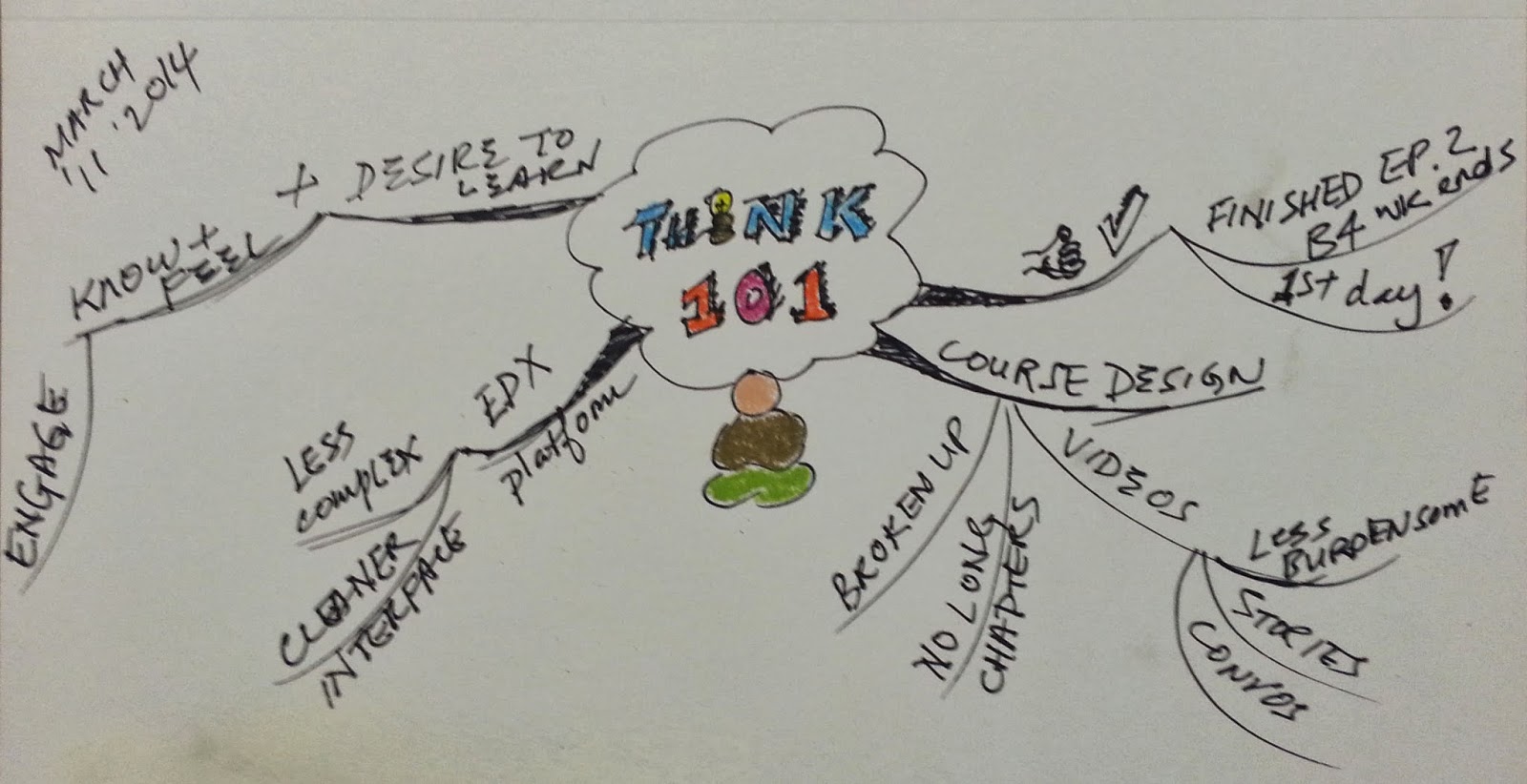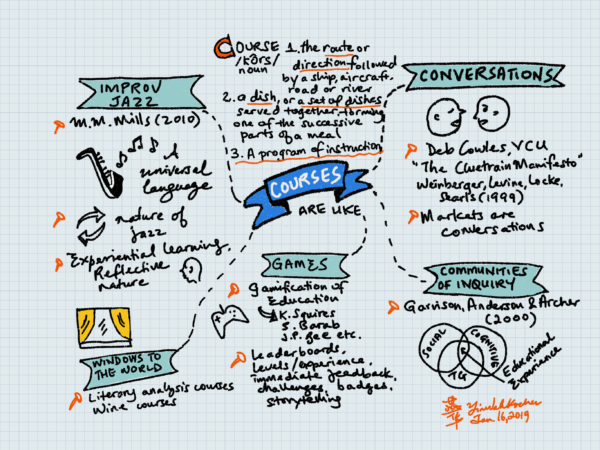A Critical Conversation about Instructional Design
Dear Maha,
Thanks for the interesting conversation around the use of the terms Instructional (versus Learning) Design. I will do my best to respond to your question about resources and add some quick thoughts along the way.
“Instructional” Theories
Several scholars in the field have written about the history of ID. It’s been a while since I completed doctoral studies in ID and I don’t have all my books with me. Robert Reiser and Michael Molenda have written about the history and philosophical origins of ID.
As to ID theories, it started with the call by John Dewey in his Presidential Address at the 1899 American Psychological Society for a linking science between learning theories and educational practice (Reigeluth, 1983). Learning theories (descriptions about how people learn) arose in response to the educational needs of the times. ID is hence a middleman that attempted to respond to the needs of instruction in education. It sought to focus on the process of instruction; at that time it was the age of industrialization, the age of mass education, hence IDs sought to help educators produce factory workers. ID theories were/are prescriptive in nature, distinguishing them from learning theories, to help teachers focus on methods of instruction. Hence, formally trained IDs study both learning theories and instructional theories in order to do the best job as middlemen to optimize learning conditions to facilitate learning.
Facets of ID theories have emerged out of learning theories and media and communications. Hence, the most recognized professional association with which IDs are affiliated is the Association of Educational Communications and Technology (AECT). You can go to the site to find out more about them.
There is one open-access journal supported by the association: The Journal of Applied Instructional Design.
-
Generations or Waves of ID Theories
Just as you’ve probably heard of the first wave of feminism, the second wave, third wave and so on, there are first-generation and second generation ID theories and David Merrill, a rockstar in the field of ID, has written about these. The following are two ID theories I prefer:
- Merrill’s First Principles of Instruction
- Tessmer and Wedman, Layers of Necessity Model – unfortunately, this is not open-access. There are some webpages on this but are not thoroughly written.
- As to the ADDIE model, Michael Molenda has some explanation as to its meaning and elusive origin.
These links should be a good start for now.
“Learning” Theories
IDs study learning theories. Although learning is complex and we can probably never figure it out entirely, IDs need to understand how people learn. ID is an art and a science. IDs need to know learning science, like it or not, because we are a part of it. I was glad to hear this from Susan:
@yinbk @Bali_Maha my program is a good mixture of ID, pedagogy and learning sciences
— Suzan Koseoglu (@SuzanKoseoglu) January 18, 2016
The following paragraphs are from a paper I wrote about learning theories in 2003. My conclusion then was, and still is, that each major learning perspective is a wave of thought, building upon each other as the study of learning progressed over the years.:
[B]ehaviorism arose approximately around the late Industrial Age, at the turn of the century and reigned supreme for some fifty years (APA web site, 1999). There was a need for standardization of learning so that the behaviorist approach of learning by stimulus-response associations was appropriate. World War Two produced a performance gap: ordinary men drafted into the army who had to become soldiers adept at handling warfare weaponry and flight machines. Conditioning and reinforcement for swift and reflexive responses were essential.Cognitivism dominated the learning scene from the 1970s and was used to account for the missing link that previous explanatory theories were powerless to do – the mind and how our thinking changes as we learn. High-speed computers had been developed to replace many menial tasks. Instruction derived from cognitive learning approaches therefore produced information processors to mimic computer technology. Message design became the goal of instructional designers to stimulate and facilitate retention and equip mankind to cope with the age of information explosion.
Though computers are widely acknowledged for their efficiency, the human touch was lacking. From the 1980s to the present, a need for personalization and customization has given rise to the dominance of social learning theories, explanations of how learning is based on social processes supported by cognitive factors. This understanding inspired instruction on collaboration as a tool to managing change in current society.
These days, the catchword in learning is the much-debated idea of constructivism, that of learning as being a progressive construction and deepening of meaning; a dynamic interaction between the environment and the individual brain, not just a process of transferring information. Non-invasive brain mapping has enabled researchers to watch learning occur as specific patterns of activity within the brain light up on a computer screen. Findings indicate that the brain is a flexible, self-adjusting system that grows and reshapes itself in response to challenge or withers through lack of use. Constructivists believe learning is open-ended, like the neural structures of the brain, and knowledge is constructed through social interaction. Hence, they believe instruction should take place in authentic social contexts and offer opportunities for learning a multiple range of skills so as to position members of society for whatever future they will face (Abbott & Ryan 2001, p.5 & 16).
Contentious Issues
Currently, some education and non-education folks are arguing about certain notions:
- Learning is a black box to which we know nothing about and is too subjective for teachers to design any instruction. My question to them is: Do teachers walk into every class with nothing prepared? Once there is intentionality, there is some design thinking. I believe all teachers have multiple roles and one role is that of an instructional/learning designer. We all have beliefs and values that guide our teaching.
- One type of pedagogy is the best for students. As an instructional designer, I don’t use one framework or one heuristic or believe that one specific pedagogy is the best for our students. I say this because our students are unique, not one pedagogy is the best for all the learning challenges we face as teachers. How can one size fit all? Moreover, much as teachers have learning goals for our students, the educational system works against us. Our students have other non-learning goals. They want to get their credentials, they want the best GPA they can get. We have to design our courses in such a way that learner empathy is balanced with our desired learning goals, and that together these drive the design, not our favorite pedagogy.
I can go on about more contentious issues, but my intention is not to be defensive about ID. My hope is to share accurate educational content. There is too much out there about ID that is untrue. To folks who question me about ID — mostly folks who are misinformed — I hope this is useful.
P.S. Whether I’m called an ID or LD or ILD, it doesn’t bother me. What matters is who I am.
Sincerely, Yin



